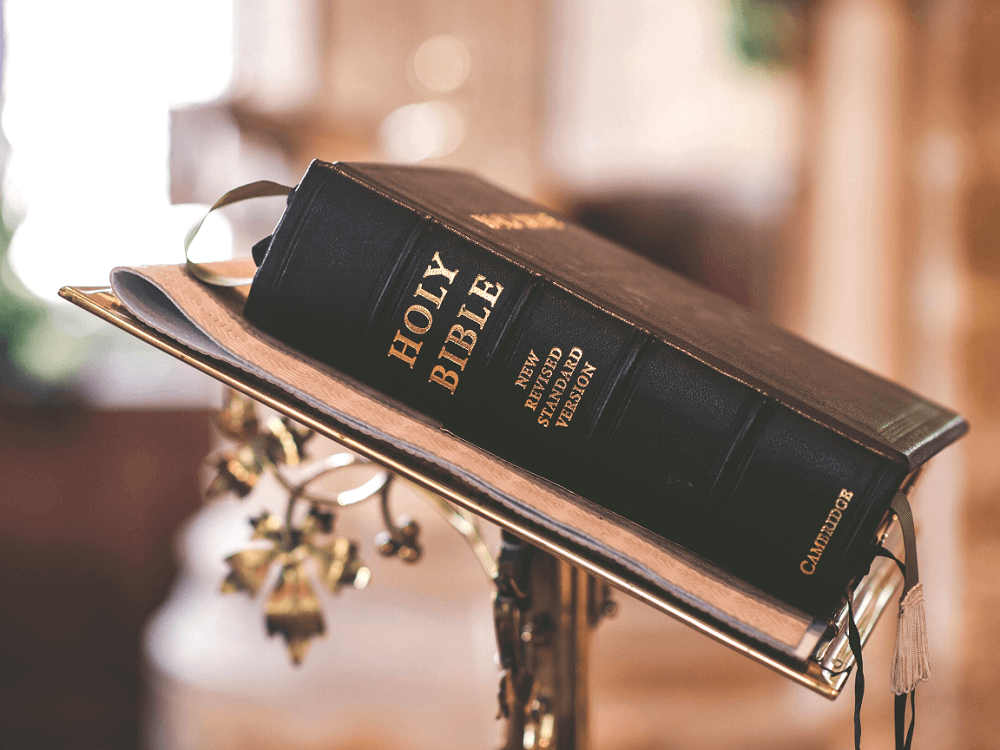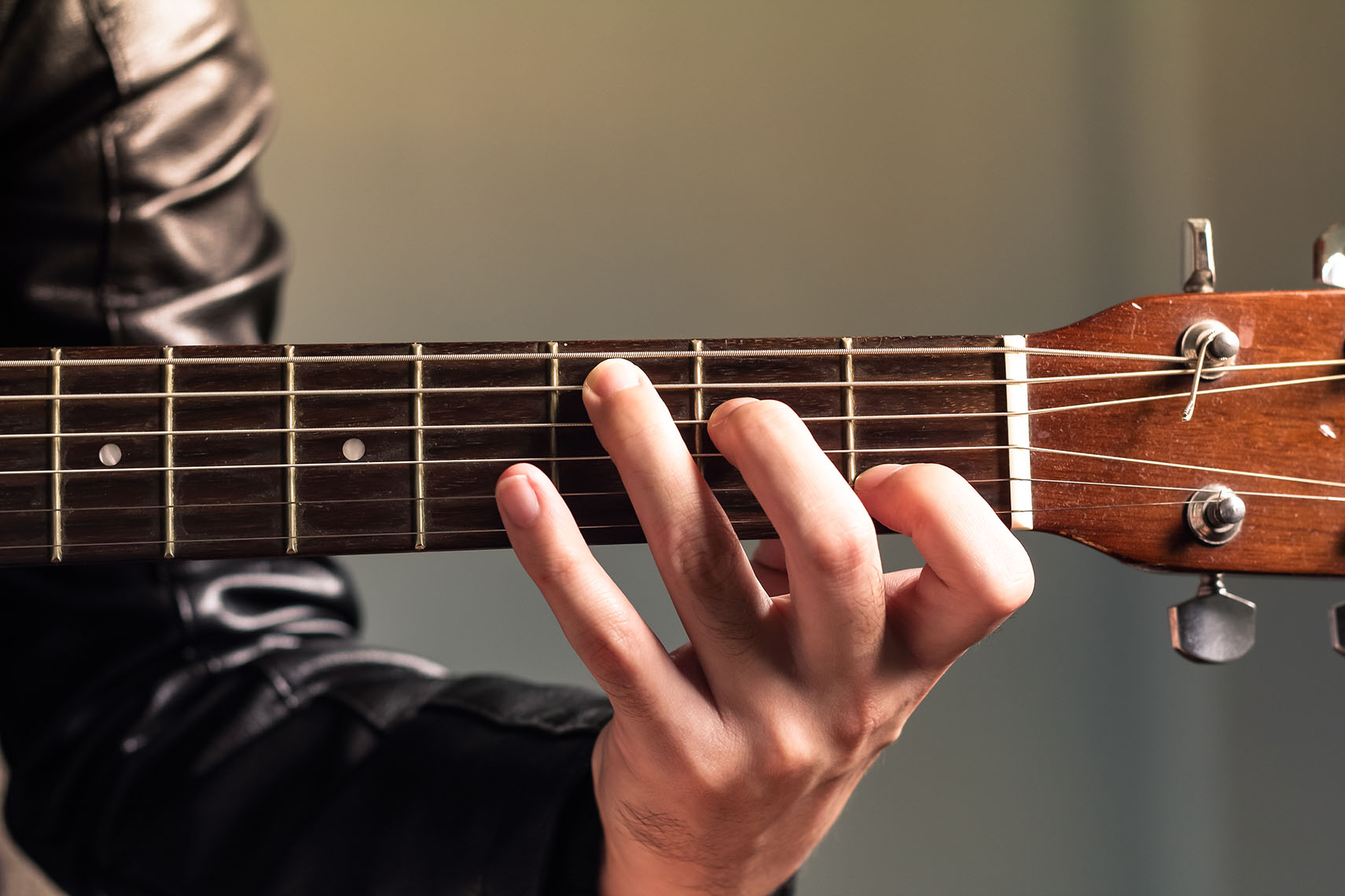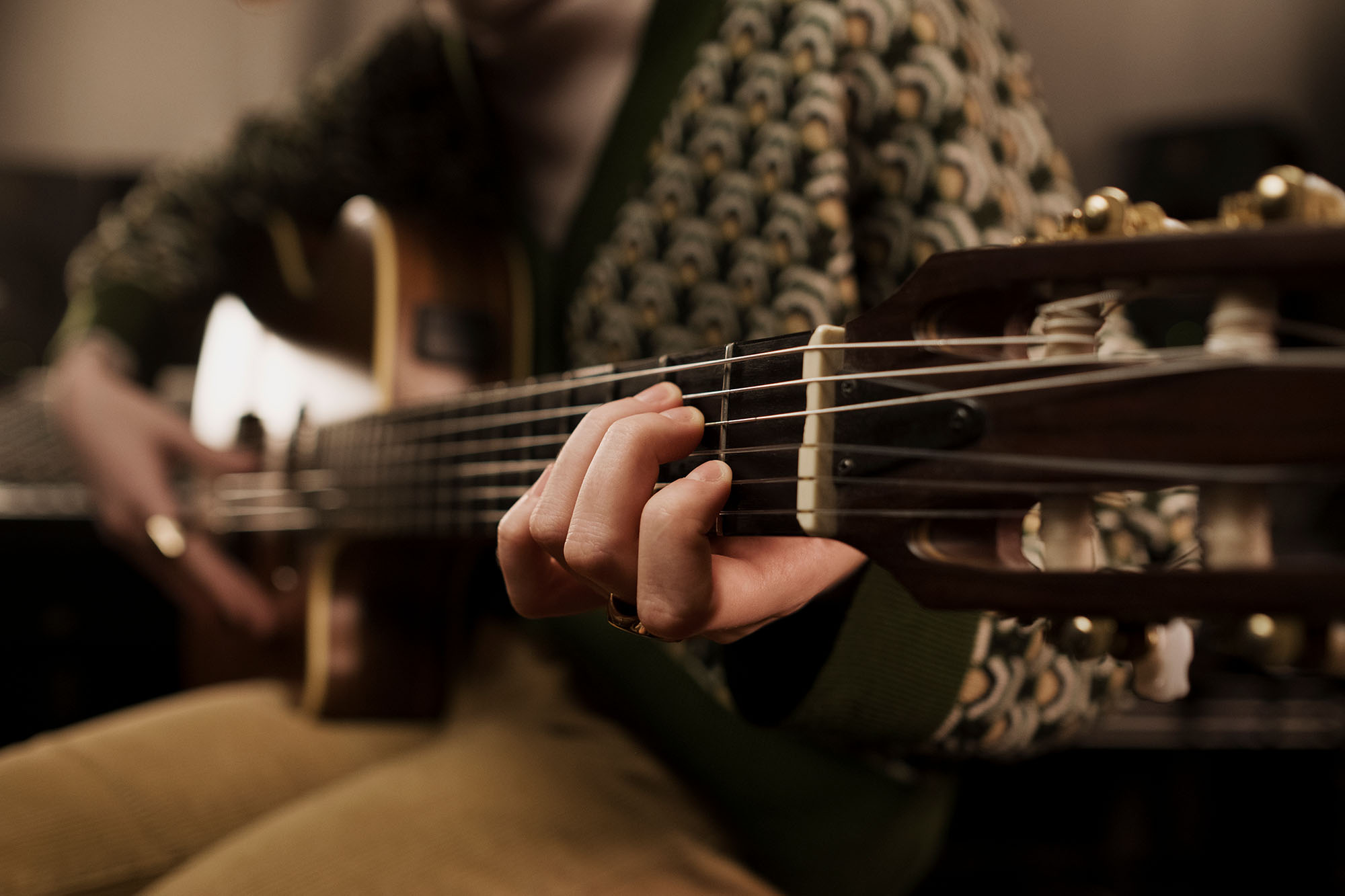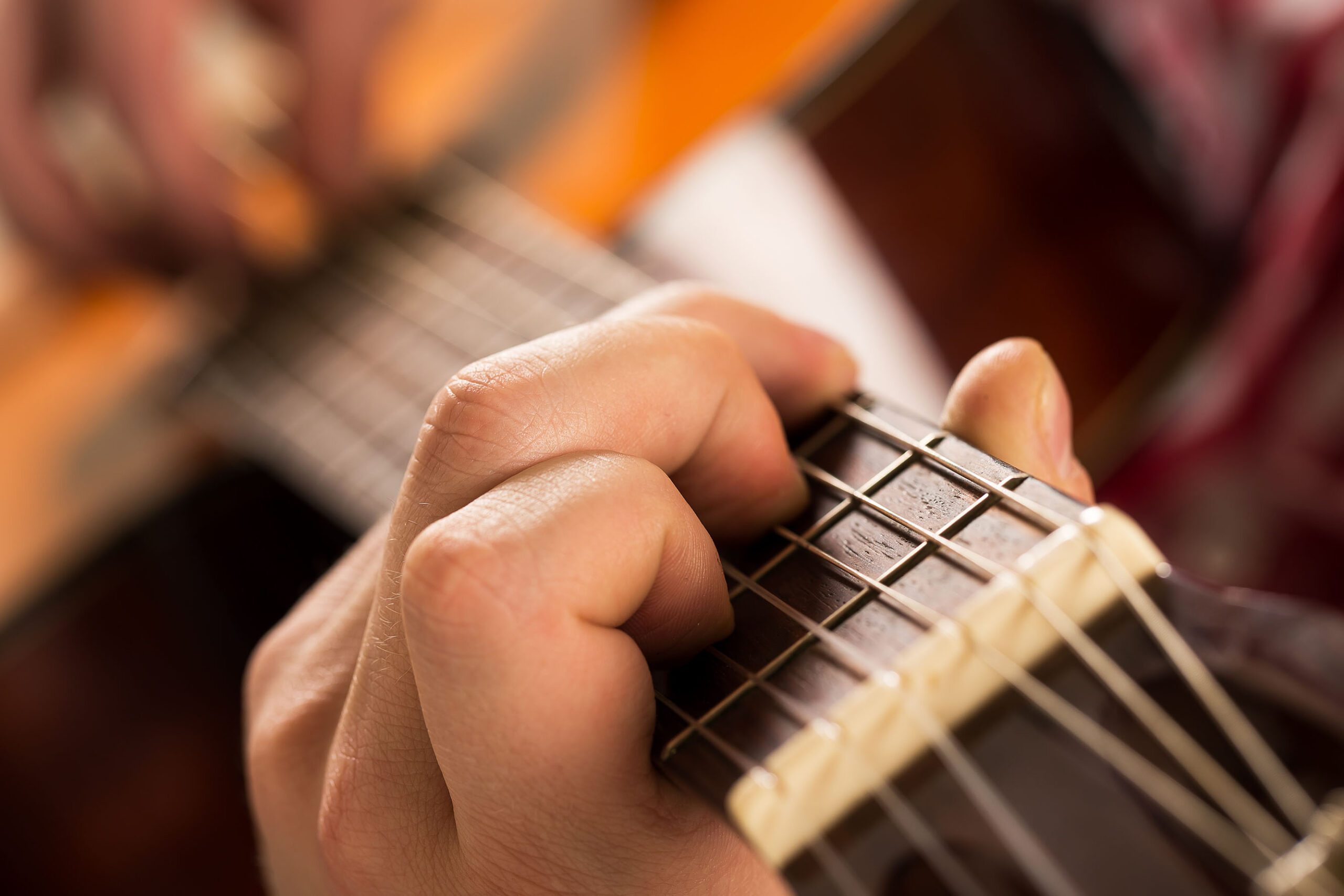Gospel has a long history beyond the modern christian contemporary songs you may already know.
It was the primary source of music for many people for quite a long time before the radio was invented.
This genre heavily influenced the early Rock n’ Roll pioneers like Elvis Presely, Johnny Cash, and Jerry Lee Lewis.
R&B music also took a lot of inspiration from gospel when you look at Ray Charles, Aretha Franklin, and even James Brown.
Any songwriter who wants to bring peace and happiness to their listeners can benefit from looking into these progressions.
Table of Contents
- Gospel Chord Progressions
- I7 – I – IV – IV – I7 – V7 – (I7 – G7) – I7
- (I – IV) – (I – I6) – IV – I – (I – I6 – IV) – (I – IV) – (I – V) – I
- (IV – I6) – (IV – I6) – (IV – I6) – (V6 – I)
- I – (I – I7) – IV – IV – (vi – IV) – I6 – V – V7
- I – IV – I – (V7 – II7 – V7) – I – IV – (I – V7) – (I – IV6/4 – I)
- (I – Idim7) – I – (IV – IVdim7) – (I – II7) – V – V7 – I – (vi – V7)
- (I – Imaj7) – I7 – IV – IV – (I6 – V6/4) – (I – I6 – Dbdim7) – ii7 – (V7 – vi – V7)
- (I – I6) – (IV – V) – (I – I6) – (IV – III) – (IV – I) – (V – vi) – (IV – I) – (V – I)
- i – iv – (V – i) – (i – iv – i) – VI – (i – V) – (V – V7) – i – (i – V7) – I – V7 – i – (i – V7) – i – V7 – i
- (I – ii7 – I6 – IV) – (I6 – vi7 – V)
- (I – V – vi7 – V) – (IV – V) – (I – V – vi7 – V) – (IV – V) – (ii – vi) – (ii – I) – (ii7 – I – vi7) – (bVII – I – V)
- I – I – IV – (IV – IVdim) – I6/4 – V7 – I – V7
- What makes a good gospel song?
Gospel Chord Progressions
I7 – I – IV – IV – I7 – V7 – (I7 – G7) – I7
This first progression shows just how heavily the genre relies on F major and maj7 chords.
Maj7 chords have a dreamy, heavenly feeling because it’s two chords on top of each other, literally.

The F6 and Bb6 only add onto this feeling.
Here’s what we mean by two chords on top of each other:
- F maj7 = F – A – C – E
- Am = A – C – E
This is an example of a “polychord.” Lots of chords with extensions like this have several chords built on top of each other.
This gives more complexity to the chords is all.
Other polychords include 9th chords, 11th chords, and 13th chords amongst others.
All of the chords in the tab, except for G7, come from the key of F major:
- F major scale = F – G – A – Bb – C – D – E
- F6 (I) = F – A – C – D
- Bb6 (IV) = Bb – D – F – G (has the same notes as Gm, so it’s a polychord)
- G7 (VI7) = G – B – D – F (B is not in F major)
- C7 (V7) = C – E – G – Bb
This is not the only example we’ll go over in F major so keep reading if you don’t quite understand a lot of this.
(I – IV) – (I – I6) – IV – I – (I – I6 – IV) – (I – IV) – (I – V) – I
If you look at this progression, you’ll see there’s lots of changes but just three chords: D, G, A, and D/F# (a slash chord).
It’s not really that complex in that sense, but the harmonic rhythm is unique compared to many other progressions.
Harmonic rhythm is the idea of planning and controlling the amount of harmonies that appear per bar or bars.

The standard for many songwriters is to have one chord per bar, or one chord for 2 to 4 bars.
This song however has two changes per bar in several measures and there’s no strict pattern with the harmonic rhythm either.
This is something to keep in mind as you look at other progressions and make your own.
The chords that are in the song are the standard I, IV, and V.
The I6 indicates an inversion where the third is in the bass.
- D Major Scale = D – E – F# – G – A – B – C#
- D (I) = D – F# – A
- D/F# (I6) = F# – D – A – D
- G (IV) = G – B – D
- A (V) = A – C# – E
You’re going to see the I, IV, and V a lot too so hold on if this is new to you. We’ll explain more in the next few songs.
(IV – I6) – (IV – I6) – (IV – I6) – (V6 – I)
This progression comes from the gospel classic “Imagine Me” by Kirk Franklin.
It has few chords, like the previous song, but the change from Fsus2 to C/E is quite interesting for many reasons.
Many chord progressions in gospel music, and other genres, rely on the strong relationship between the V chord and the I chord.

This is the most basic and strongest chord change you can make in any song.
In fact, many songwriters avoid using these two chords together because of that fact.
The Fsus2 to C/E is in some ways a V to I change, though F is a IV chord in the key of C major.
- C major scale = C – D – E – F – G – A – B
- Fsus2 (IV) = F – G – C – F
- C/E (I6) = E – E – G – C – E
- G/B (V6) = B – D – G – D
With the G in Fsus2, the chord acts almost like a V chord.
With the E being in the bass of C/E, the change from F to C is even stronger too.
Hopefully this will give you ideas on how to change up some of your standard IV and I chords in the future.
I – (I – I7) – IV – IV – (vi – IV) – I6 – V – V7
No gospel music article can go long without looking at this classic and well-known song.
Amazing Grace is also in F major so I’ve made my promise to you to talk more about this key signature.

Many believe that F major is the best expression of calm and peace in the western tonal system.
Beethoven himself used it for his 6th symphony, the Pastoral, and it’s no wonder that many gospel songs choose this key to write in.
The way to understand a tonal system best is to understand that:
- All the chords are composed of notes from the major or minor scale it’s based in.
- All the chords are built off thirds from that scale, by literally skipping one note in the scale then using another.
So look closely at the composition of all of these chords as I break down the tonal system of F major:
- F major scale = F – G – A – Bb – C – D – E
- F (I) = F – A – C
- F7 (I7) = F – A – C – Eb (Eb does not belong to F major)
- Bb (IV) = Bb – D – F
- Dm (vi) = D – F – A
- F/A (I6) = A – A – C – F
- C (V) = C – E – G – (Bb)
Adding Bb to C makes it a 7th chord as Bb is a minor 7th interval away from C.
Take a close look at the scale formula then the notes of each chord.
Everything except for Eb comes from F major, and Eb is often used to make a I7 chord.
“Stacking thirds” can be done by skipping one note to get to the next note and then making a chord.
For instance, to make an F chord, you start on F, skip the A and Bb, and put A and C on top of F. F to A is a major third, while A to C is a minor third.
By explaining this, we’re hoping you can more easily see the connections between the chords and the underlying musical relationships.
This will give you more raw material to make music and a better understanding of the music you’re studying.
I – IV – I – (V7 – II7 – V7) – I – IV – (I – V7) – (I – IV6/4 – I)
We’re now getting into the progressions that have more chords and are thus a little more complicated.
However we’re back to F major again so you should know how most of these fit into that key.
G7/D and Bb/F are what are called “neighboring chords” or “passing chords.”

The idea is to give some movement and variety to a stagnant chord progression like I – V7.
All the tab above is doing is throwing in a quick chord that’s close by before going to the other chord.
That’s how G7/D, which is a slash chord that doesn’t belong to F major, can work so well.
The song isn’t sitting on this harmony for long, and it’s helping us intensify the resolution to C7 and then to F again.
G7/D is a chromatic foreign chord because it has the note B in it.
Bb is the tone that’s diatonic to F major, and B doesn’t exist in the F major scale.
Every single chord can be used as a passing chord when thought of in this way.
Some of course will work better than others.
(I – Idim7) – I – (IV – IVdim7) – (I – II7) – V – V7 – I – (vi – V7)
This progression comes from the classic gospel song “Old Rugged Cross,” which is in the key of Bb major.
However it uses many of the same chords as F major (one flat) as it only has one flat in contrast to Bb major (two flats).

The most interesting part of this progression is the use of the dim7 chords, but to understand that you need to look at this breakdown of Bb major:
- Bb major scale = Bb – C – D – Eb – F – G – A
- Bb (I) = Bb – D – F
- Bbdim7 (Idim7) = Bb – Db – E – G (Db and E are not in Bb major)
- Eb (IV) = Eb – G – Bb
- Ebdim7 (IVdim7) = Eb – Gb – A – C (Gb is not in Bb Major)
- C7 (II7) = C – E – G – Bb (E is not in Bb major)
- F (V7) = F – A – C – Eb
- Gm (vi) = G – Bb – D
So why use chords that have notes that are not a part of the key?
Well the simple answer is that it makes the progression much more interesting when we push the limits of the key signature.
This is where the dim7 chords come in.
The general rule with chromaticism is that it’s best to alter chords that are already a part of the key signature, or introduce chords that have some of the notes in the key.
Both Bbdim7 and Ebdim7 do this.
Dim7 chords have lots of uses, but the best way to see it is as a variation of the V chord, or relative V chord.
It can be used in the key of Bb major to make a VII chord.
Compare the chords below:
- F7 (V in Bb major) = F – A – C – Eb
- Ebdim7 = Eb – Gb(F#) – A – C
F7 and Ebdim7 have two similar notes (A and C), and thus can be substituted for one another.
This is how it can function as a V chord.
Look at the Bbdim7 chord:
- Eb7 (V of Ab major) = Eb – G – Bb – Db
- Bbdim7 = Bb – Db – E – G
Since every Dim7 chord has four notes, it can change to and be substituted for many other chords.
It’s also why it works often as a VII chord (Am7b5 in Bb major) too.
So changing quickly to Bbdim7 and Ebdim7 adds lots of dimensions to this chord progression.
(I – Imaj7) – I7 – IV – IV – (I6 – V6/4) – (I – I6 – Dbdim7) – ii7 – (V7 – vi – V7)
In “Because He Lives,” many of the same ideas of neighboring chords and chromaticism come into play.
The harmonic rhythm is also quite interesting as there is no apparent pattern.

Some chords are played the entire measure while other measures have two or more changes.
Bb7 and Dbdim7 are the only two chromatic foreign chords used here.
Dbdim7 has a similar usage as the dim7 chords in the previous example.
- G7 (V of C minor/major) = G – B – D – F
- Dbdim7 = Db – E – G – Bb (Db and E are not part of Bb major)
- Bb major scale = Bb – C – D – Eb – F – G – A
Gm/F and Bb/D are used as passing chords that are moving towards or “on the way” to the next chord.
All of these ideas show you that you are not bound at all to stick to a major or minor key’s notes and chords.
(I – I6) – (IV – V) – (I – I6) – (IV – III) – (IV – I) – (V – vi) – (IV – I) – (V – I)
We’re back in F major so I’ll save you the breakdowns and talk about chromatic chords, except for just one.
In this progression you’ll see that the iii chord is a major III (A) chord instead.
It doesn’t come from F minor, the parallel minor mode, though.

That’s because its major third interval, the note C#, doesn’t come from that key.
In fact, it doesn’t come from any closely related key so that’s why I claim it’s a strictly chromatic chord.
- F major scale = F – G – A – Bb – C – D – E
- A (III) = A – C# – E
I see the use of A as a quick passing chord to harmonize the C# note right next to D, the top voice in Bb major, in the 5th measure up above.
i – iv – (V – i) – (i – iv – i) – VI – (i – V) – (V – V7) – i – (i – V7) – I – V7 – i – (i – V7) – i – V7 – i
This is a long chord progression at 16 bars long. Bb major and F major seem to be the go-to keys for gospel music, which makes our discussion of chord progressions easier.

The D and D7 chords are the only foreign chords in this context as F#, the third to D major, is not a part of the key of Bb major (G minor relative minor key), which is the key of this song.

Here’s a breakdown of the G minor scale:
- G minor scale = G – A – Bb – C – D – Eb – F
- Gm (i) = G – Bb – D
- Cm (iv) = C – Eb – G
- D7 (V7) = D – F# – A – C (F# not in the scale above)
- Eb (VI) = Eb – G – Bb
Using the V7 in a minor key is an indicator of the song using the harmonic minor scale.
The F note will be raised a half step, to F#, to become a harmonic minor scale. When you do that, you’ll have that D chord that’s used often in this song.
This is a typical move to make the resolution back to a i chord stronger.
It all goes back to manipulating the V to I chord change that’s used so often in many types of music.
(I – ii7 – I6 – IV) – (I6 – vi7 – V)
The key signature marking shows no sharps, but this classic gospel song is in D major (2 sharps #s).
This chord progression has the style of a Bach chorale in that each note is individually harmonized with a chord.
This will lead to having 3 to 4 chord changes in a single bar, like you see up above.

In this style of writing, there is strict part writing where each note is planned in terms of counterpoint rules.
Using counterpoint and using strict part writing is a very intricate process that goes beyond this article unfortunately.
All we’re saying is that each note in the top voice, starting with the 2nd fret on the first chord on the high E string, has notes to harmonize with it.
This is all a bigger part of a discipline called “voice leading” that’s often taught in higher level harmony classes at many music schools.
(I – V – vi7 – V) – (IV – V) – (I – V – vi7 – V) – (IV – V) – (ii – vi) – (ii – I) – (ii7 – I – vi7) – (bVII – I – V)
This chord progression is in Ab major, and comes from the group Mary Mary’s song called “Can’t Give Up Now.”
The amount of chord changes and harmonic symbols up above can make this progression quite intimidating to break down, as many others have been so far.

The key to learning from this progression and not getting intimidated by it is to realize that all of these chords come from the key of Ab major.
The next step is to realize that many of these chord changes will be repeated.
The first two bars are repeated in the two bars right after it.
So let’s do another quick breakdown of the key.
This way you’ll see all the chords of the scale and how I’m able to break this down so quickly.
The only foreign chord is the Gb chord, the bVII.
- Ab major scale = Ab – Bb – C – Db – Eb – F – G
- Ab (I) = Ab – C – Eb
- Bbm7 (ii7) = Bb – Db – F – Ab (remove Ab and you get the ii chord)
- Cm (iii) = C – Eb – G
- Db (IV) = Db – F – Ab
- Eb (V) = Eb – G – Bb (remove the g and you get Eb5)
- Fm7 (vi7) = F – Ab – C – Eb (remove Eb and you get Fm)
- Gb (bVII) = Gb – Bb – Db (Gb is not part of the scale)
I’ve broken this key down many times and have all of this memorized.
So it’s not magic or talent that allows me to do this, and I hope that this inspires you to learn more about theory, harmony, and voice leading.
I – I – IV – (IV – IVdim) – I6/4 – V7 – I – V7
You made it to the last progression!
This is another gospel standard recorded by Elvis Presley and many others.
It’s in the key of A major, and the progression has only one foreign chord, the Ddim.

One more time, let’s do a breakdown, as this is the key to looking at a progression quickly and seeing how it works.
- A major scale = A – B – C# – D – E – F# – G#
- A (I) = A – C# – E
- D (IV) = D – F# – A
- Ddim (IVdim) = D – F – Ab/G#
- A/E (I6/4) = E – A – E – A – C# – E (as laid out in the chord shape in the tab)
- E7 (V7) = E – G# – B – D
The thing is, with lots of notes and chords, is that they want to resolve downwards.
So when looking at how Ddim goes to A/E, I see that F and realize that chord change works because the F in Ddim wants to go down to E in A/E.
This is also why V or V7 often wants to go back down to the I chord.
It’s what our ears want to happen, but a skillful songwriter can manipulate this tendency.
What makes a good gospel song?
Most gospel progressions use the major keys, and several that we’re about to go over like to use F major.
This is natural as major key progressions are often calming, peaceful, and joyful.
Major keys are the common tool to use in order to suggest a sound free of any discomfort or internal conflict.
So many of these chord progressions will make full usage of the harmonies available, which means lots of IVs and Vs.
There will also be a fair amount of ii, iii, and vi chords as well.
In a few progressions though there will be some use of diminished chords.
Unlike reggae or funk though, the rhythms of gospel are not meant to be as expressive as those genres.
That means a heavy emphasis on the strong beats like 1 and 3 in 4/4, or the 1 in 3/4.
Loves studying classical piano, youtube video tabs, and music theory textbooks to get insights into guitar playing that no one else has uncovered yet. In his spare time, he can be found relaxing at the beach in San Diego, or adventuring somewhere around the world.




